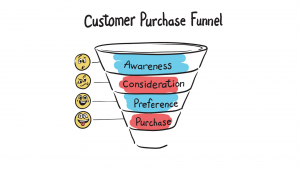Whilst social media may proclaim to be the be all and end all of marketing tools, 95% of online consumers use email regularly in comparison to 74% using Facebook (Lacy, 2013). According to Groves (2009) email marketing is unimaginably financially savvy approach to establish and build relationships that drive business success. To delve deeper into the keys of success this blog will give marketing managers implementations as to the keys of successful email marketing strategy. Google Small Business YouTube video below highlights the ‘Do’s and Don’ts’ of email marketing, however below are the most potent within email campaigns.
https://www.youtube.com/watch?v=p9FPrwTwIXU
Creating solid content:
Personalised emails improve click-through rates, creating customised messages requires high-quality that provide value. Using a double opt-in process instead of a single, a brands email list may take longer to compile but will be cleaner and have a more engaged audience, this simple yet technique of personalising emails can help feel a greater sense of connectedness towards the brand which consequently drives loyalty (Ryan, 2017).
Decided ideal email frequency:
This process is not a one-size-fits-all, it is the involvement of segmentation; highly engaged, limited engagement and no engagement (Wallace, 2016). How often does the customer REALLY need to be contacted? 50% of customers feel emotionally unsubscribed to a brand despite being subscribed to their electronic mailing list (Chaffey, 2015). With this in mind there is a dire need to categorize mailers from those who regularly view content and those who don’t, limiting emails to those who don’t. This as a means in which to keep them on side, not losing them from mailing list.
Just visiting or here to stay?
Guests who come to the website, may choose to checkout on one singular purchase and never have a desire to return, this can therefore invite emails to be ignored or placed into the spam folder. As seen below, BuzzFeed’s successful email offering users’ content that invites images and content to attract users back to the page. This furthermore encourages users to revisit the page and in theory build brand loyalty, encouraging users to continue to involve themselves in content.
Overcoming risks:
Although ROI is high in email marketing, investment of time and steady streams of measurable results whereby they are to be nurtured over time. This can be risky to organisation as unlike online media like social networks and app launches, email marketing has no specifics to viral content, as emails are sent to specific recipients. With time and experience ROI remains easy to project and a balance rate of growth (Williamson, 2017).
References:
Chaffey, D. & Ellis-Chadwick, F. 2015, Digital marketing, Sixth edn, Pearson, Upper Saddle River.
Lacy, K. (2013) 50 Email Marketing Tips and Stats for 2014, Exact Target. 14 August 2013 [Online] <http://www.exacttarget.com/blog/50-email-marketing-tips-and-stats-for-2014/
Ryan, D. 2017, Understanding digital marketing: marketing strategies for engaging the digital generation, Fourth edn, KoganPage, London.
Wallace. M (2016) 6 keys to more effective email marketing. Marketing Land. Accessed at: https://marketingland.com/marketers-need-effective-183796
Williamson. W (2017) 8 Challenges of email marketing and how to avoid them. Accessed at: https://blog.jdrgroup.co.uk/digital-prosperity-blog/how-to-avoid-email-marketing-challenges








